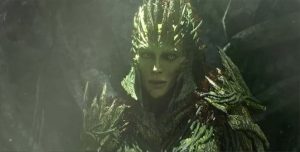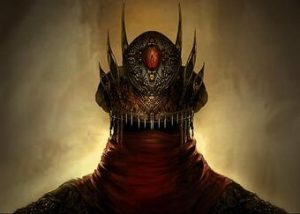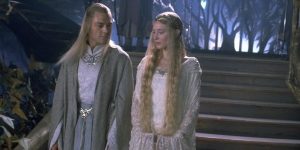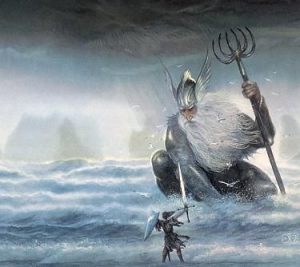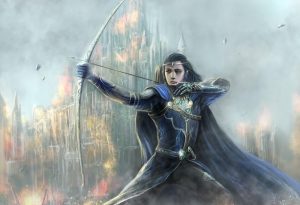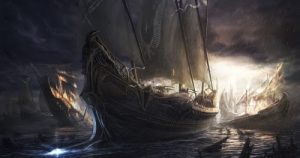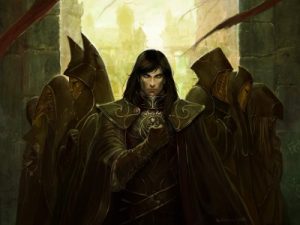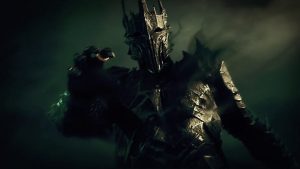TheOneRing.net has long served a dual function as the largest online community of J.R.R. Tolkien fans and a base of fandom research into any and every adaptation of The Lord Of The Rings: in the late 1990’s and early 2000’s, a vast network of spies frequently wrote in to the site from the Peter Jackson trilogy’s set with spy reports that gave fans a first taste of what Jackson was concocting down in New Zealand, preparing them for many of the trilogy’s biggest and most controversial moments; both perfect page-to-screen translations and drastic (and often controversial) divergences from the text. TheOneRing.net developed a good reputation for their work, and eventually became a semi-official channel for New Line Cinema, tirelessly relaying new information to the fans while providing necessary feedback to the studio. The Lord Of The Rings trilogy undeniably benefited from that unprecedented level of communication between the filmmakers and their audiences.
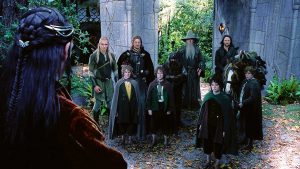
These days, TheOneRing.net (or TORN, for short) does not yet enjoy the privilege of being able to officially coordinate with Amazon Prime Studios regarding their upcoming adaptation of J.R.R. Tolkien’s work – and thus, I’ve had to take many of their recent reports with a grain of salt. But last night, after a lot of hinting and teasing, TORN proved that they are indeed back in the game, having gotten their hands on the very first official synopsis for Amazon Prime’s The Lord Of The Rings series. IGN was later able to confirm its authenticity with their own sources, and I myself am fairly confident this is the real deal. It doesn’t read like a fake, which would likely have thrown in some hyperbolic details about what to expect, just to cause chaos and commotion in the fandom.
Rather, the synopsis merely goes over much of what we already knew about the series, adding a little bit of context for general audiences and some intriguing sentences that caught my eye. Let’s break it down:
“Amazon Studios’ forthcoming series brings to screens for the very first time the heroic legends of the fabled Second Age of Middle-earth’s history. This epic drama is set thousands of years before J.R.R. Tolkien’s The Hobbit and The Lord Of The Rings, and will take viewers back to an era in which great powers were forged, kingdoms rose to glory and fell to ruin, unlikely heroes were tested, hope hung by the finest of threads, and the greatest villain that ever flowed from Tolkien’s pen threatened to cover all the world in darkness. Beginning in a time of relative peace, the series follows an ensemble cast of characters, both familiar and new, as they confront the long-feared re-emergence of evil to Middle-earth. From the darkest depths of the Misty Mountains, to the majestic forests of the elf-capital of Lindon, to the breathtaking island kingdom of Númenor, to the furthest reaches of the map, these kingdoms and characters will carve out legacies that live on long after they are gone.”
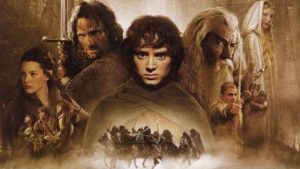
Confirmation, if you needed it, that the series is in fact set in the Second Age of Middle-earth (which you can learn more about here on my blog), and that the title “The Lord Of The Rings” is still deliberately misleading. This period of time is bound to be darker and more brutal than the era of The Lord Of The Rings proper, though Amazon is setting the stage for a story with similar themes and characters. Some of the very same characters will, in fact, cross over…but more importantly, Amazon is promising us “unlikely heroes”, a character archetype that is pivotal to the enduring success of The Lord Of The Rings and sorely lacking from the myths of Middle-earth’s earlier history.
During TORN’s livestream, guest star Molly Knox Ostertag (the host of last year’s popular Tolkientober fan-art challenge) tackled this subject quite eloquently, explaining that the “little guy” is what makes Tolkien’s work so approachable even after so many decades: because we can all relate to small, ordinary people like Frodo, Bilbo, and Sam, whose small, ordinary acts of kindness end up saving the world. Readers need to have an emotional investment in a character or a relationship in order to keep reading, and hobbits are so down-to-earth, so humble and so unassuming, that it’s hard not to get invested in them and their journeys through Middle-earth. The Silmarillion, Tolkien’s posthumously-published compendium of First Age myths, was initially unpopular with fans because it lacked hobbits or any hobbit analogues that could keep readers grounded amidst all the epic battles, tragic romances, and stories of somber heroes doomed to die gruesomely. The Second Age has that problem too, which is what Molly Ostertag noted: unless we have a “little guy” to get attached to, where’s the emotional investment? That’s why the mention of “unlikely heroes” makes me hopeful this issue will be remedied without having to bring in hobbits, who don’t really exist yet in the Second Age, at least not as we know them.
With the scope of this series sprawling across the entire map of Middle-earth and even beyond it, the presence of small characters and microcosmic stories is that much more essential. But speaking of what lies beyond the map, let’s touch on that for a moment – the synopsis does confirm that we’ll explore regions of Middle-earth that have never been glimpsed in any previous Tolkien adaptation, like Númenor and Lindon. The “furthest reaches of the map”, however, could very well refer to the mysterious lands east and south of Mordor. And who better to explore these lands and their unique cultures than the two Blue Wizards, who (according to Tolkien’s last writings on the subject) arrived in Middle-earth’s uncharted east during the Second Age, and there proved to be pivotal in the war against Sauron? When this topic came up on the livestream, Molly Ostertag suggested that the Blue Wizards should be depicted as a lesbian couple – yes, yes to all of that. I’ve long felt that one or both of the Blue Wizards should be a woman of color, and the thought of two queer women of color using magic in Middle-earth is indescribably empowering.
The synopsis ends by talking about “legacies” that will live on long after our main characters are dead and gone, implying to me that some of the main cast might revolve periodically throughout the course of the series. This wouldn’t surprise me: the Second Age spans over three-thousand years, and even the longest-lived humans of that era couldn’t survive that long if they tried (and trust me, they did). But while it could be an interesting and shocking gimmick for a few seasons, it could also prevent audiences from ever becoming attached to any season’s human cast – as the immortal Elves would likely be the only constants from one season to another in that case. Compressing the timeline into a few hundred years isn’t ideal either, though, so I suppose we’ll have to wait and see what Amazon has in mind.
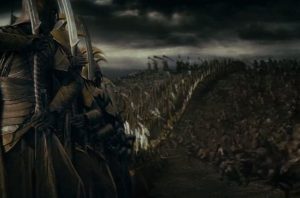
That’s pretty much all there is to say about The Lord Of The Rings‘ synopsis, but there is one last thing I want to add. Near the end of TORN’s livestream last night, host Justin posed a thought-provoking question to each of the guests: what they wanted to see or hear next from the series? There were a lot of good answers, but I knew right away what my answer would have been, if I were asked.
I want TheOneRing.net to be as intimately involved with the Amazon series’ production as they were with Jackson’s trilogy. Although the level of coordination between TORN and New Line Cinema was unprecedented, it was beautiful because of how it allowed our fandom a firsthand experience of the adaptation of our favorite story and the ability to observe the filmmaking process up close, and gave the studio a trusted outlet through which to speak directly to fans. On that fateful night that Return Of The King pulled off a clean sweep in thirteen Oscars categories, Peter Jackson and his crew even opted out of the New Line Oscar Party and attended TORN’s fan-event instead. These days, it’s traditional for studios to give all their biggest scoops and press releases to the major Hollywood trades, allowing news to spread more quickly to a wider audience, but taking a step back from fans in so doing. The creation of a link between Amazon and TORN would go a long way to making all fans feel a lot more welcome…while allowing Amazon a window into the Tolkien community that can help them gage what fans want to see.
So what do you think? Does The Lord Of The Rings‘ synopsis pique your interest, or leave you underwhelmed? Do you want to see Amazon honor those old bonds of fellowship with TORN? Share your own thoughts, theories, and opinions, in the comments below!
